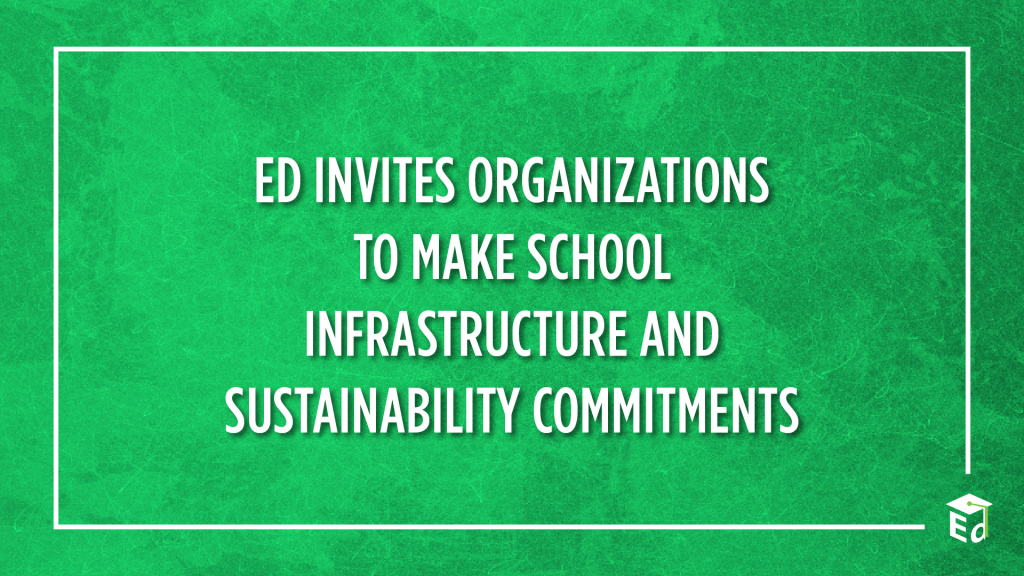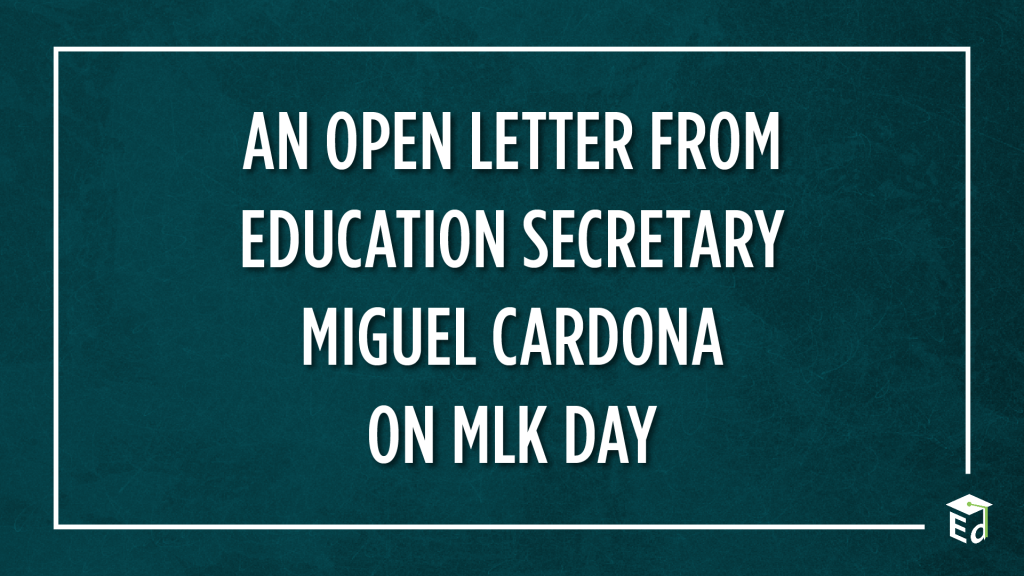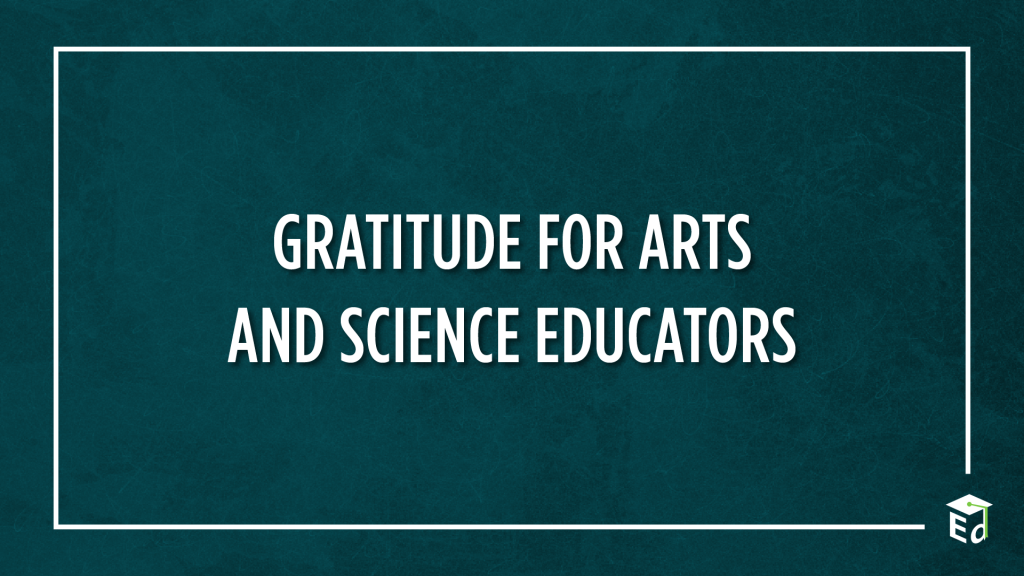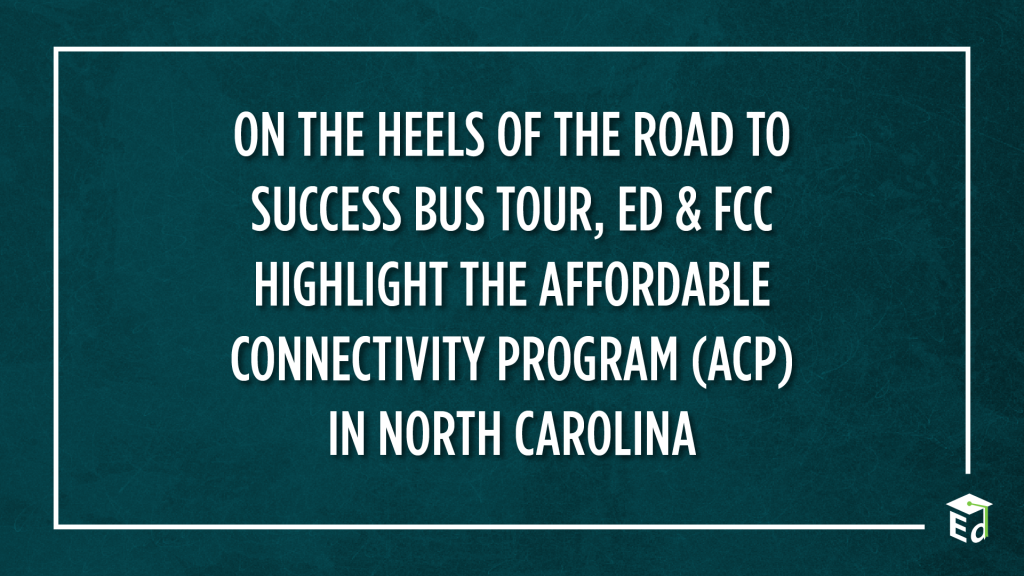
In the U.S., accountability and funding for school curriculum, buildings, and grounds primarily comes from state and local agencies. For this reason, the U.S. Department of Education (ED) has limited authorities in the areas of school infrastructure, sustainability, environmental justice, and climate. Nevertheless, ED continues to think creatively about how it can spur action and build leadership capacity to make all schools healthy, sustainable 21st century environments that offer environmental sustainability learning. One way ED can grow these efforts is by inspiring school partner organizations and developing shared messaging across the nation for what makes a healthy and sustainable school.
Today, we are thrilled to invite national, regional, and local non-profits, foundations, businesses, and community-based organizations to share bold commitment(s) to advance school sustainability, encompassing infrastructure, health, environmental sustainability education, climate, and environmental justice in America. By May 31, we ask organizations and entities to complete an online form to share how they will advance at least one of these infrastructure and sustainability priorities:
- Priority #1: Ensure equitable access to healthy, safe, sustainable, 21st century physical learning environments.
- Priority #2: Develop, maintain, and provide environmental sustainability learning, such as climate literacy, green workforce development, and outdoor learning.
- Priority #3: Build capacity for infrastructure, sustainability, environmental justice, and climate mitigation and adaptation in schools.
Those making commitments are encouraged to address at least one of the following parameters in their commitment submission:
- Environmental Justice: How does your commitment account for and take actions to promote environmental justice, so that all students have equitable access to safe, healthy, sustainable, and modern school environments and engaging environmental sustainability education?
- Health: How does this work ensure access to sustainable school buildings and grounds that are healthy environments for learning?
- Climate Action: How does this effort help education leaders understand their role and act on climate issues, including mitigation, adaptation, and climate education?
- Capacity Building: How does this work build school district and state education agency capacity to continuously improve school environments and environmental sustainability learning?
- Data Collection and Standardization: How will your commitment advance data collection and standardization on infrastructure and sustainability, with a view toward informed and equitable policymaking?
- Transparency and Goal-Setting: How do you plan to achieve the outcomes? What is the unit of change, and why do you think your approach will work?
Example commitments might include:
- Plans to bolster environmental, sustainability, and climate education in X number of schools in the country by doing Y over Z timeframe.
- A partnership to bring indoor air quality technical assistance to X number of school districts annually for Y years.
- A pledge of Y dollars toward a specific school infrastructure purpose that mitigates climate change, reduces utility costs, and improves health and learning outcomes.
- A proposal of X practices to Y schools which will enable more healthy, nutritious, local, student-grown produce in cafeterias.
- A commitment of X dollars into Y community(ies) in support of any or all of the following: infrastructure, environmental justice, health, climate, or whole school sustainability.
Around the time of our July 25 U.S. Department of Education Green Ribbon Schools awards ceremony, ED will share about bold new commitments through a variety of communications mediums. Take the School Infrastructure and Sustainability Challenge by making a commitment today!










